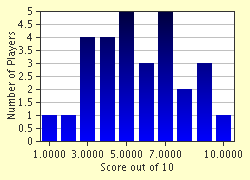Quiz Answer Key and Fun Facts
1. Budapest (or to be precise, Buda) began as a small Celtic community in the first century B.C. on which hill, that is today next to the Liberty Bridge and overlooks the Danube River?
2. After centuries of invasions by different tribes, Hungary was formally founded in AD 896 by which man, who is frequently called the founder of Hungary and began building the cities of Buda and Pest?
3. What is King Ladislaus IV best known for in Hungarian history?
4. Which Renaissance Hungarian king ruled from Buda Castle from 1458-1490 and helped transform Buda into an artistic and intellectual city?
5. Both the Siege of Buda in 1541 and the Siege of Pest in 1542 were led by Suleiman the Magnificent of the Ottoman Empire in his attempt to make those cities part of the Ottoman Empire.
6. What were the results of the 1686 Battle of Buda between the Holy Roman Empire and the Ottoman Empire?
7. What is the name of the bridge that was completed in 1849 and is considered one of the most famous sights in Budapest today?
8. Who was the Hungarian national poet, who in 1848, rallied the people in Hungary to revolt against the Habsburgs during the Hungarian Revolution?
9. The modern city of Budapest, as we know it today, formed in 1873 when Buda and Pest joined with which third city?
10. Which of the following is NOT a statement that would describe the state of Budapest during World War II?
Source: Author
Joepetz
This quiz was reviewed by FunTrivia editor
bloomsby before going online.
Any errors found in FunTrivia content are routinely corrected through our feedback system.

